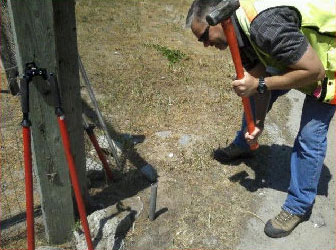Law college doesn't teach many about land studies, which leaves numerous aspiring real property attorneys in the quandary. Surveys frequently occupy the primary of real estate transactions and disputes. Throughout fact, surveys are central to ALMOST ALL real estate matters, including land conveyances, border disputes, and real estate development. Yet nearly all beginning attorneys be lacking a basic understanding of the types of surveys online. Despair not: this article provides an introduction to the kinds of surveys and their intended purposes.
DIFFERENT TYPES INVOLVING SURVEYS
The actual group and purpose of a new survey can greatly increase the reader's understanding. This is definitely very similar as seeking out an aircarrier window: the location kilometers below can seem incomprehensible unless you possess some idea of exactly what to expect.
You can find roughly four overarching categories of surveys online: 1) boundary, 2) plat, 3) topographic, and 4) construction. Everyone has their own purpose the following:
1. Border. Boundary surveys present the location regarding lots without splitting them into innovative properties. The most frequent subcategory is a 'record of survey', that is the variety discovered recorded with county auditor's offices. Other subcategories include 'right of way' (road boundaries), ALTA / ACSM (surveys intended for land title policies), riparian (water boundaries), and boundary collection adjustment.
2. Plat. Plats depict the particular division of properties. They will in essence take one particular property and split it into two or more elements. For example, some sort of plat might generate a subdivision, or a 'short plat' might create the small subdivision. These types of studies can also reflect multiple properties which coexist as a single lot-a condo 'survey map and plan. '
three or more. Topographic. Topographic surveys show the "contours" of the area. The standard and typical "contour" is transformation in elevation, generally draw as outlines representative of 2 foot rises or even drops. Other typical contours include properties, roads, utilities, waterways, and trees. As opposed to boundary surveys and plats, topographic research typically do certainly not concentrate on lot outlines, though boundary traces may be included intended for added perspective. read more of wetlands critical place survey is a new good example associated with a topographic subcategory.
4. Construction. Since the name implies, construction surveys fulfill construction site plus planning needs. They will thus often display roads, sewer traces, elevation changes, thunderstorm drain sections, energy lines, building sizes, physical obstruction, and even any other characteristics about which builders should be cognizant. Consider them typically the survey equivalent to a building's architectural drawings.

Before expressing any survey, very first identify its type and purpose. Your current clients will be glad intended for it later.
